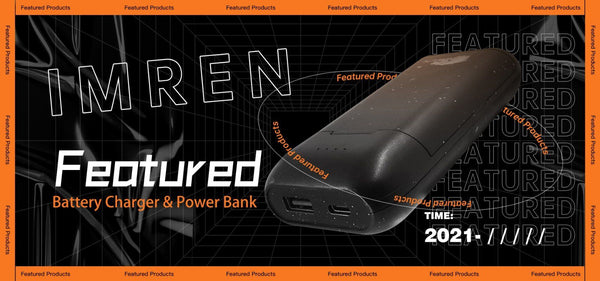
IMREN| Introduction to lithium manganese acid battery

Lithium manganese acid battery is a kind of lithium ion battery. For the classification of lithium ion battery, because its negative electrode is basically carbon raw material, the main classification method in the industry is separated by the positive material of lithium ion battery. Lithium manganate batteries are those that use lithium manganate as anode. So what is lithium manganate?
Lithium manganese acid battery is a kind of lithium ion battery. For the classification of lithium ion battery, because its negative electrode is basically carbon raw material, the main classification method in the industry is separated by the positive material of lithium ion battery. Lithium manganate batteries are those that use lithium manganate as anode. So what is lithium manganate? It is based on EMD (a raw material, used as a mercury-free alkaline manganese battery special material) and lithium carbonate (also as raw material), with the corresponding additives, through mixing, sintering and other steps of production.
Now, when we talk about lithium manganate, we say it's spinel, which is the crystal shape that it's used in lithium batteries, and when lithium manganate isn't used in lithium batteries, it's layered. Spinel structures are relatively more stable than layered structures (although based on chemical properties, it seems to be possible to think of the stability of different shapes in geometry), so spinel structures are currently used in practical applications.
In addition to lithium manganese acid, lithium cobalt acid and three lithium battery anode are spinel structure, but lithium manganese acid spinel structure and its two similar characteristics are very distinct, namely: the advantages and disadvantages are very prominent. Its advantages are: low temperature resistance, good rate performance, preparation is relatively easy, the disadvantage is: the material itself is not stable, need to be mixed with other materials, high temperature performance is poor, poor cycling performance, fast attenuation. These disadvantages of lithium manganate are due to the properties of manganese. However, because manganese is widely available, it has a significant cost advantage.

Because lithium manganate material has such distinct characteristics, so, people will use its advantages, curb its disadvantages, so that lithium manganate battery is used in different fields, usually called A and B two applications. Class A refers to the power battery, focusing on safety and cycling performance, is required to be reversible capacity in 100~115mAh/g, 500 cycles can maintain 80% capacity. Class B is mainly used for consumer electronics (mobile phone), which is characterized by high capacity. The reversible capacity is generally required to be 120 mAh/g, but the cycle performance is only required to maintain 60% of the capacity after 300~500 times.
The different performance of the two types of batteries is realized during production. As mentioned above, the preparation of lithium manganate is relatively simple. If it is processed into positive electrodes suitable for class A and B batteries, their additives and operation procedures will be different, and different synthesis methods will be adopted. Specific: high temperature solid phase method, melt impregnation method, microwave synthesis method, coprecipitation method, hydrothermal synthesis method, etc., if each preparation method is described in detail, that is the problem of manufacturing process, here only need to know that there are a variety of methods on the line.



